Balance the bow with no thumb
Let's see if you can do this. Set your bow at the very frog. Hold the bow how you would normally, and let go of your thumb from the bow. Is the bow still on the string, and you feel comfortable about keeping it there?
This is an important skill to know when you want to understand how the weight from your arm should be transferred to the bow most efficiently. By being able to balance the bow at the frog with no thumb, you will understand the efficient way to distribute your arm weight to the bow.
Angle of the weight from the arm to the bow
When your bow hair is placed flat to the strings, the most efficient way to add the weight from the arm is to feel it from the top of the stick. You will be wasting power if you were to add the weight from the side of the stick. When the bow tilts, we need to tilt the angle of the weight in accordance with the tilting of the bow.
The weight of your arm needs to get to the hair of the bow. This is why it is most efficient to add the weight from the top of the bow when the bow hair is flat to the strings, and also why we need to tilt the angle of the weight when the bow tilts.
How to balance the bow at the frog
Now you understand why it is important to add the weight from the top of the stick, let's practice balancing the bow at the frog.
- Place the bow with the hair flat on the D and A strings at the very frog using your left hand.
- While holding the bow with your left hand, place your right hand on the bow. Your hand should be coming down from above straight down to the bow, and it should feel like your fingers are resting on top of the bow. Your thumb should not be touching the bow at all.
- Adjust the finger placement so it resembles to how you would normally hold the bow. Still, no thumb on the bow.
- Let go of your left hand and see if the bow stays on the strings without feeling wobbly. You should be able to balance your bow on the strings if the fingers are placed right on top of the bow.
- Once you can balance your bow flat, start tilting the bow inward a little. You will notice the angle of the weight from your arm and hand needs to be tilted as well to keep the bow balanced on the strings.
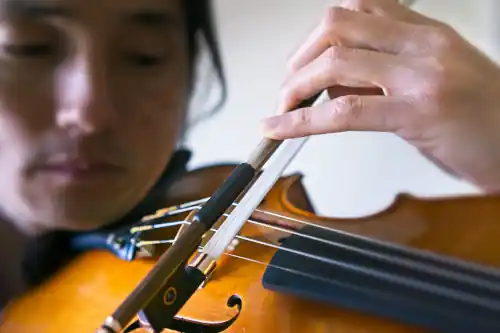
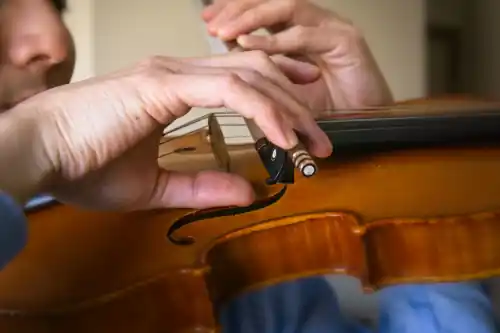
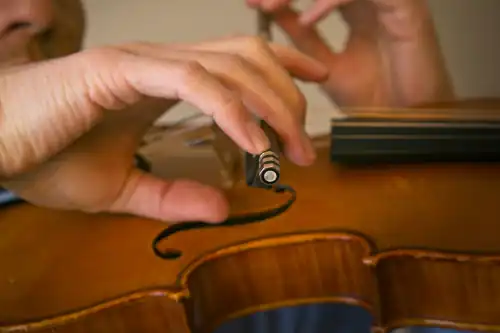
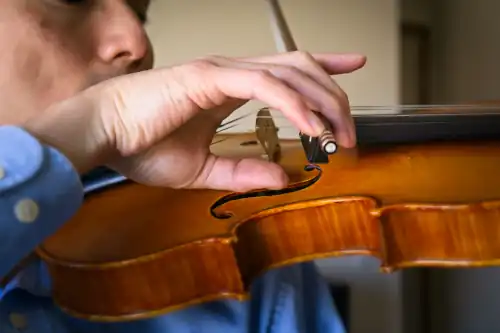
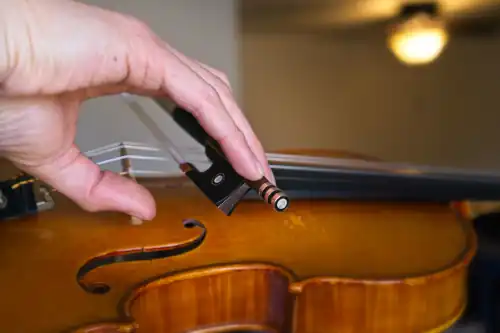
Why this is important
Why do we have to be able to balance the bow without the thumb at the frog? Because this is the very basic concept of how you should feel the weight from your arm used onto the bow most efficiently.
We need to add weight from our arm to the bow, and send that to the strings. You don't want to waste the weight when you do this; you want to use all of the weight that can be used onto the bow most naturally and efficiently.
The best way to use the weight from the arm is to feel the weight going on to the hair directly. That means you would put the weight straight down onto the bow when your bow is placed flat against the strings as we talked about it earlier. Adding weight in any other angle means you are wasting some of the weight, or you can say that some of the weight is escaping from the bow.
When the bow tilts, the angle of the weight needs to be tilted to correspond to the angle of the bow so that the weight is still being sent to the bow hair.
The only way to balance the bow with no thumb is to feel the weight towards the bow hair. Add the weight in any other angle, and suddenly your bow will not stay on the strings comfortably anymore. If you can balance the bow with no thumb at the frog, that means you understand the appropriate angle of the weight from your arm.
Efficiency in everything, from weight distribution to fingerings to practice method, is a crucial aspect of violin playing one needs to study. When you are playing efficiently, it will make the playing that much easier. Great violinists play so well partly because they have figured out ways to play efficiently. They do not make things unnecessarily difficult. We should all strive to come up with more efficient ways to play the violin in our daily practices.
Learning how to efficiently use your arm weight to produce a good tone is one of the most important things we should study. By understanding the concept of how to balance the bow with no thumb, we are one step closer to mastering the art of bowing.